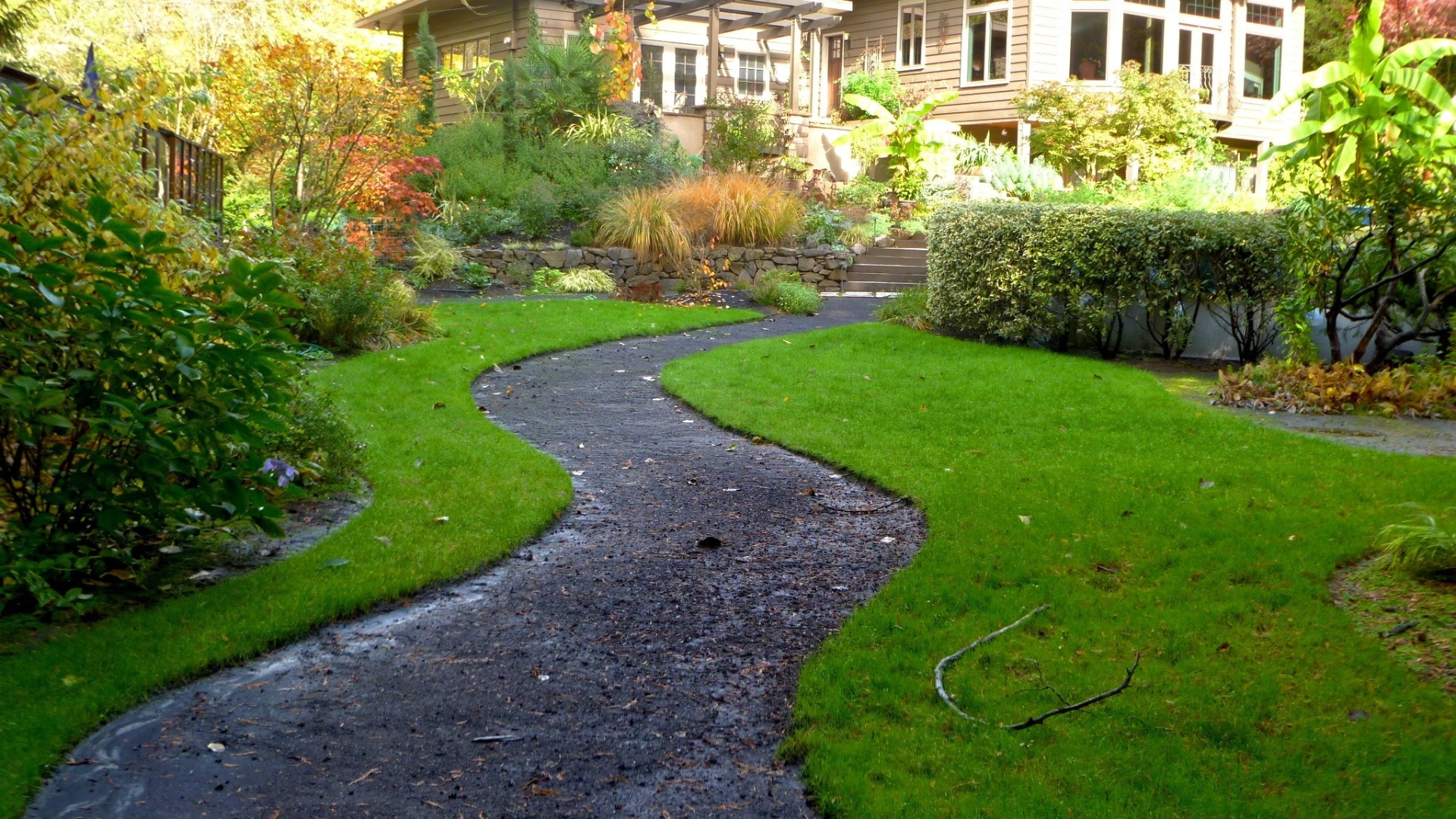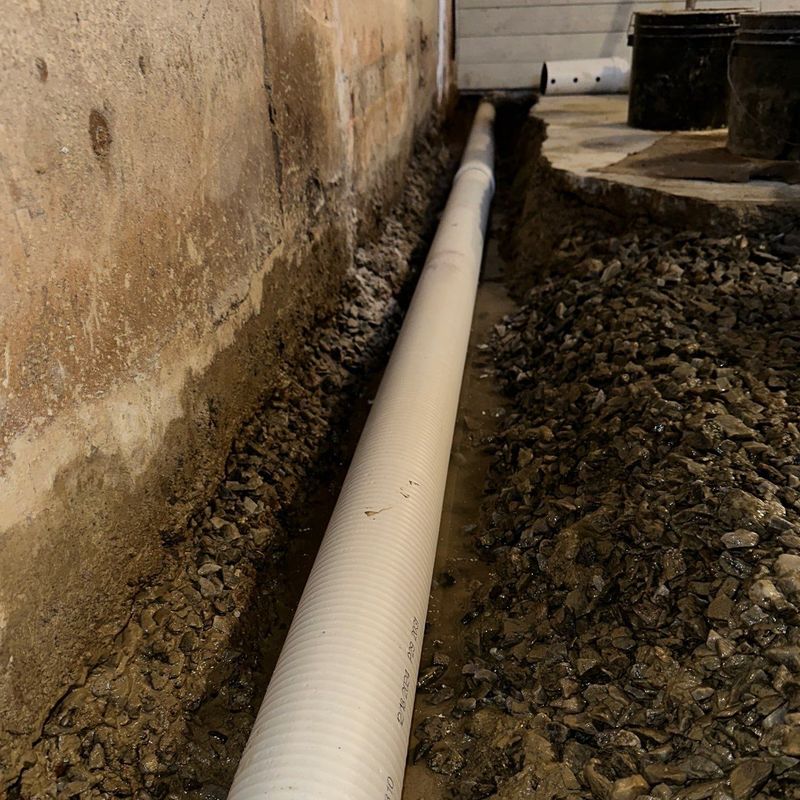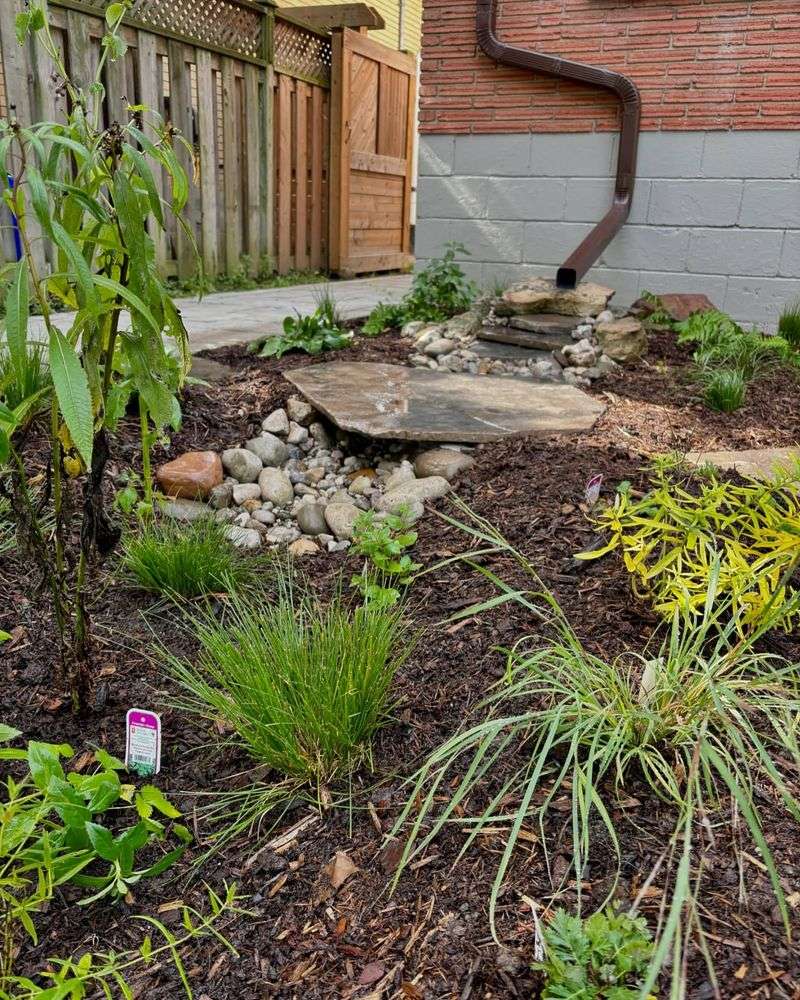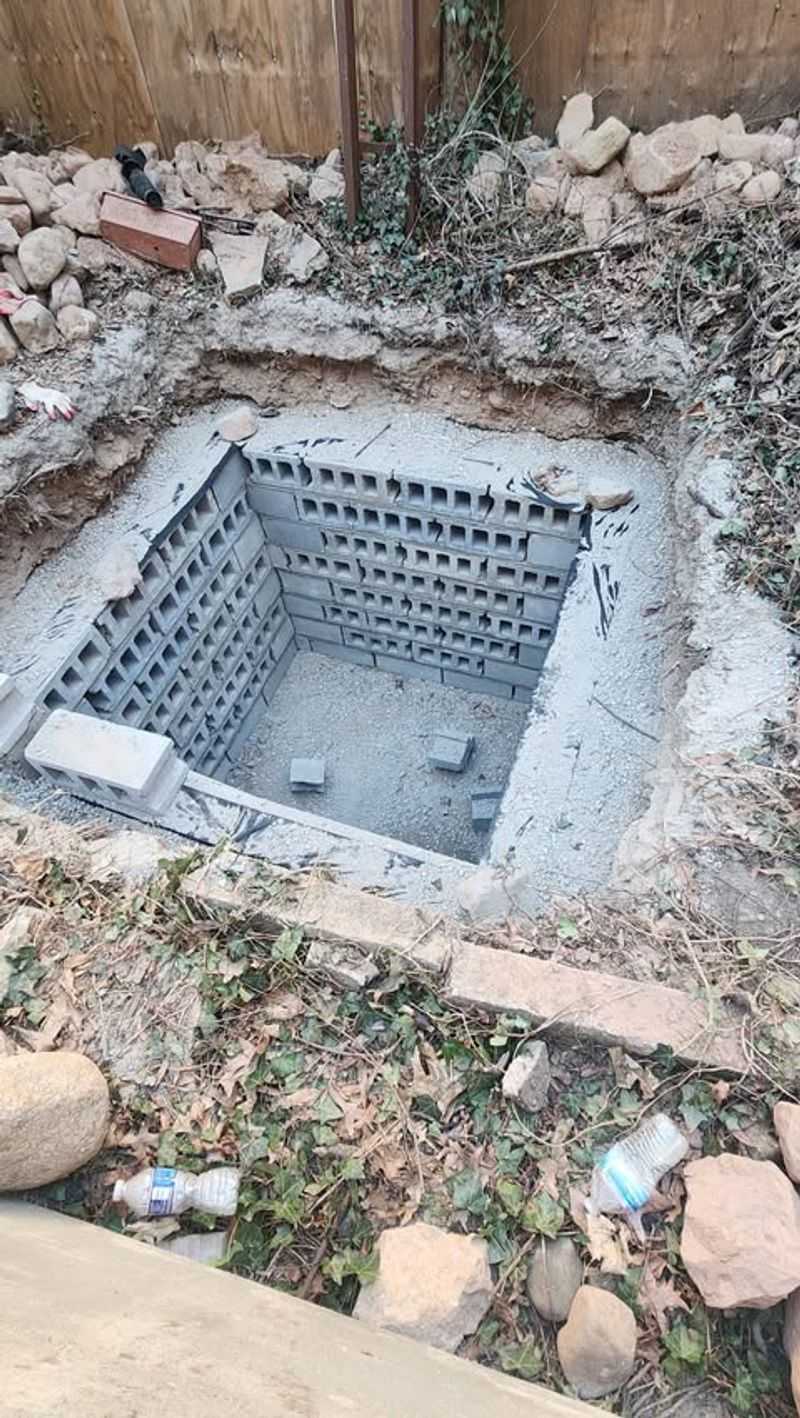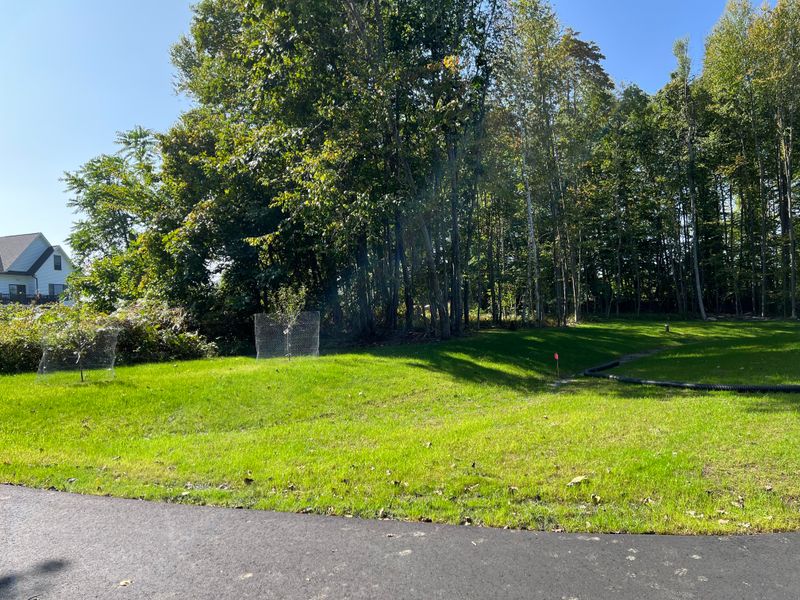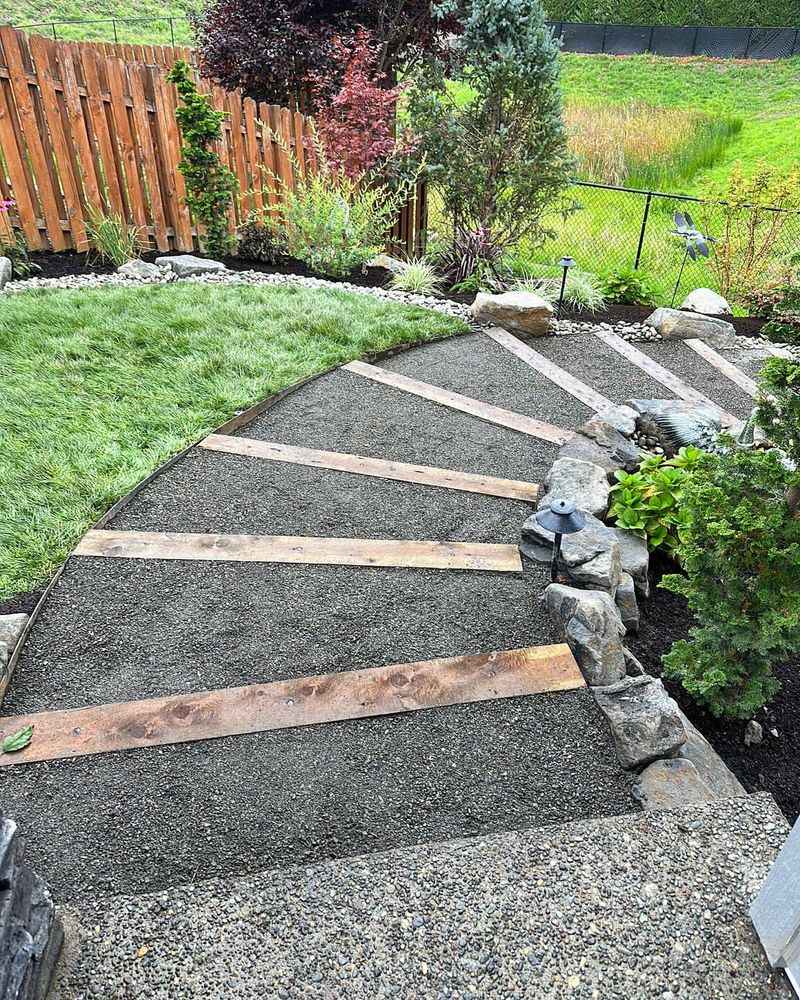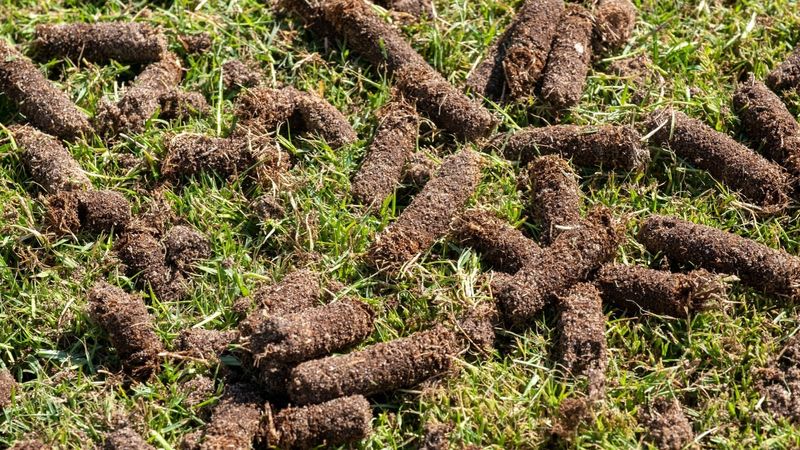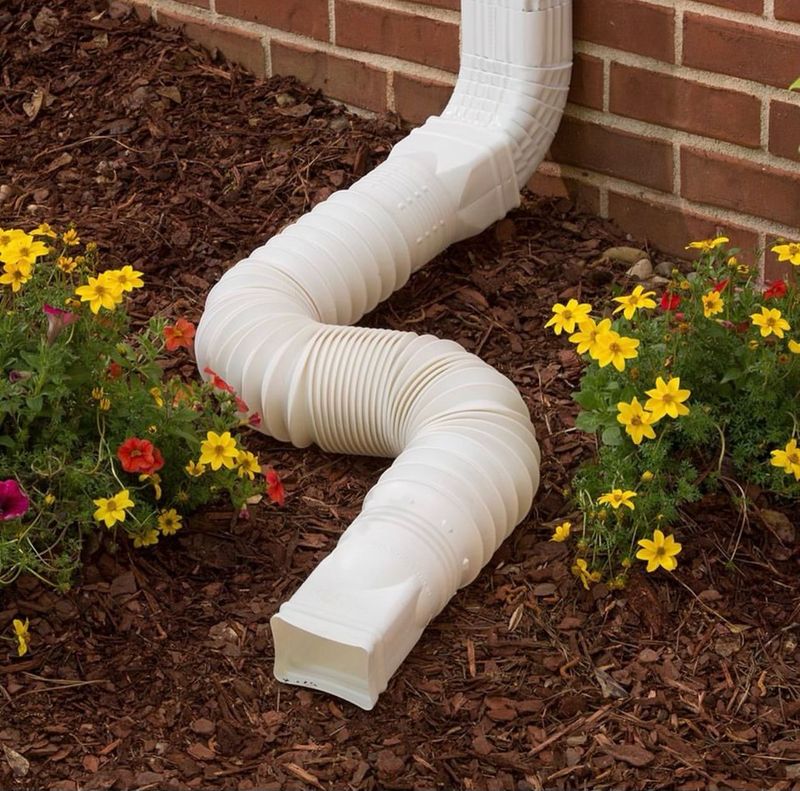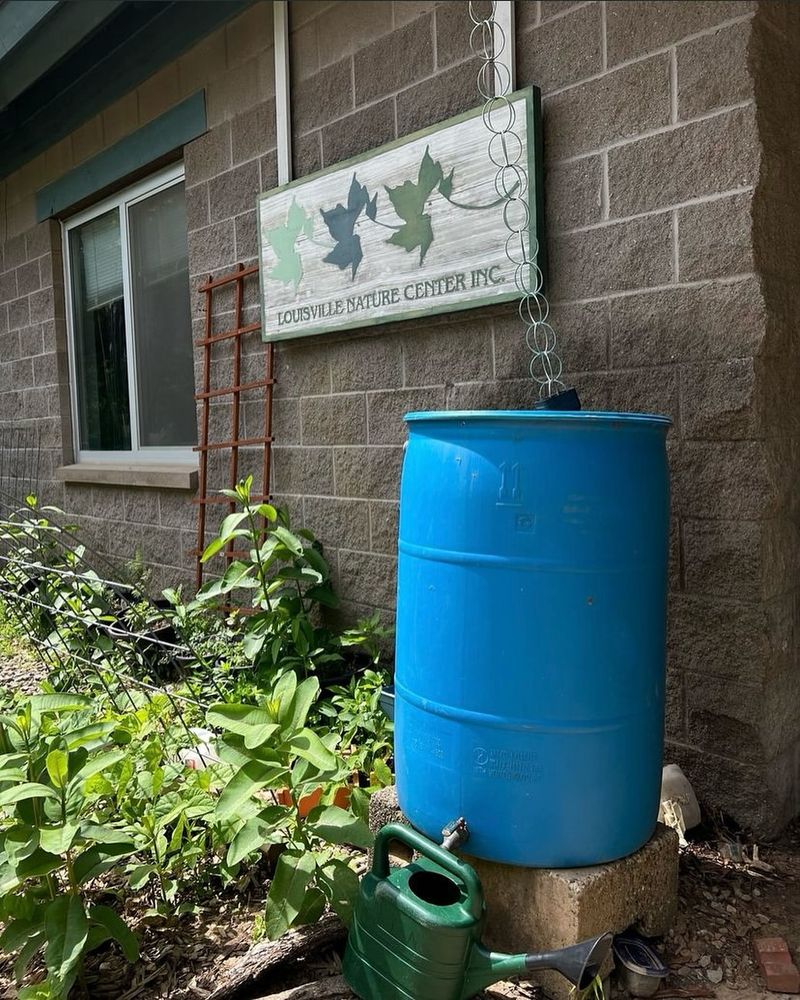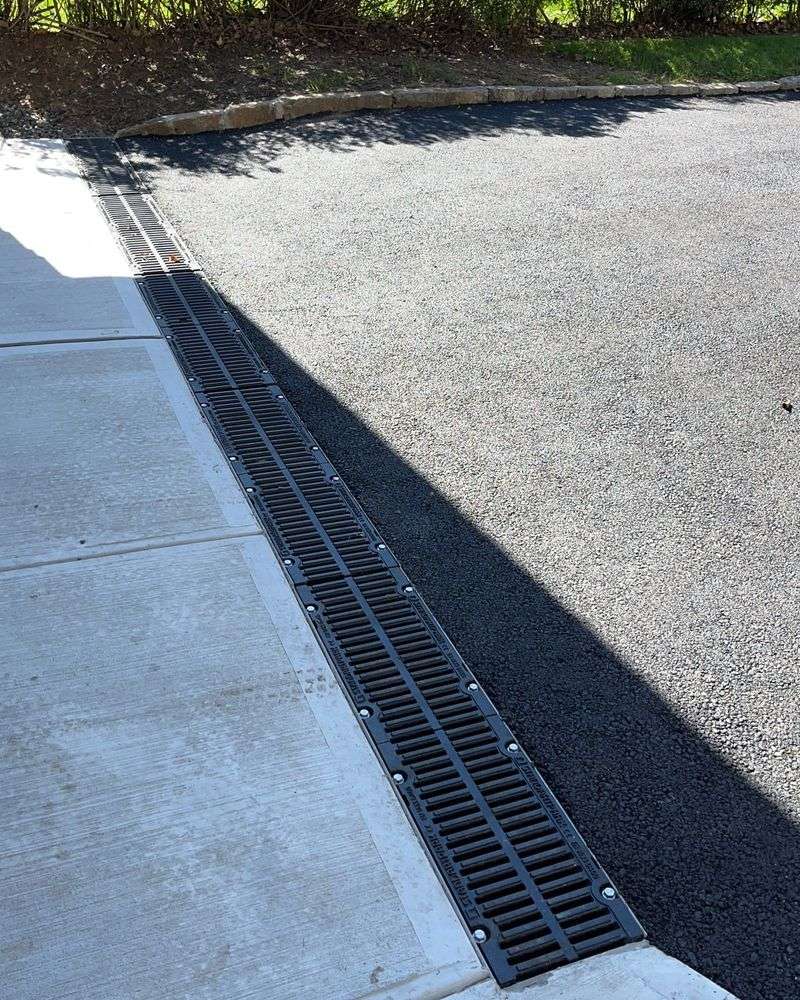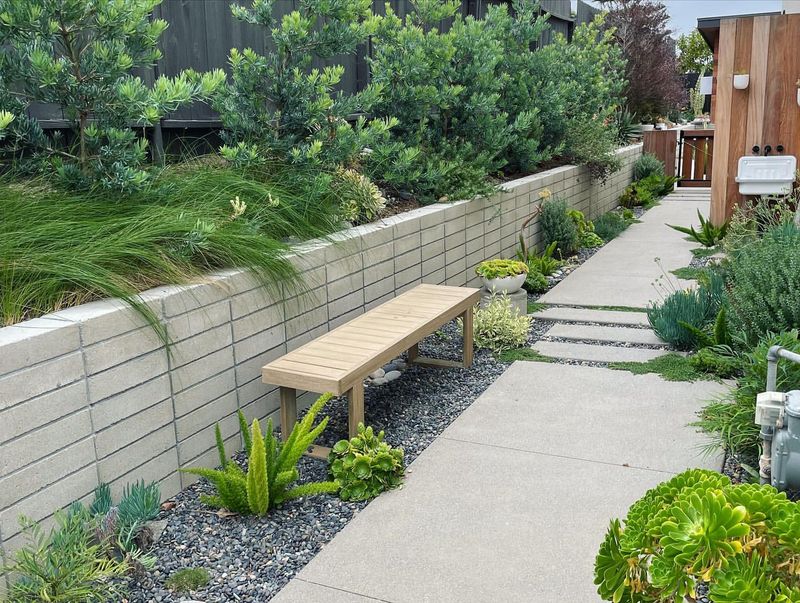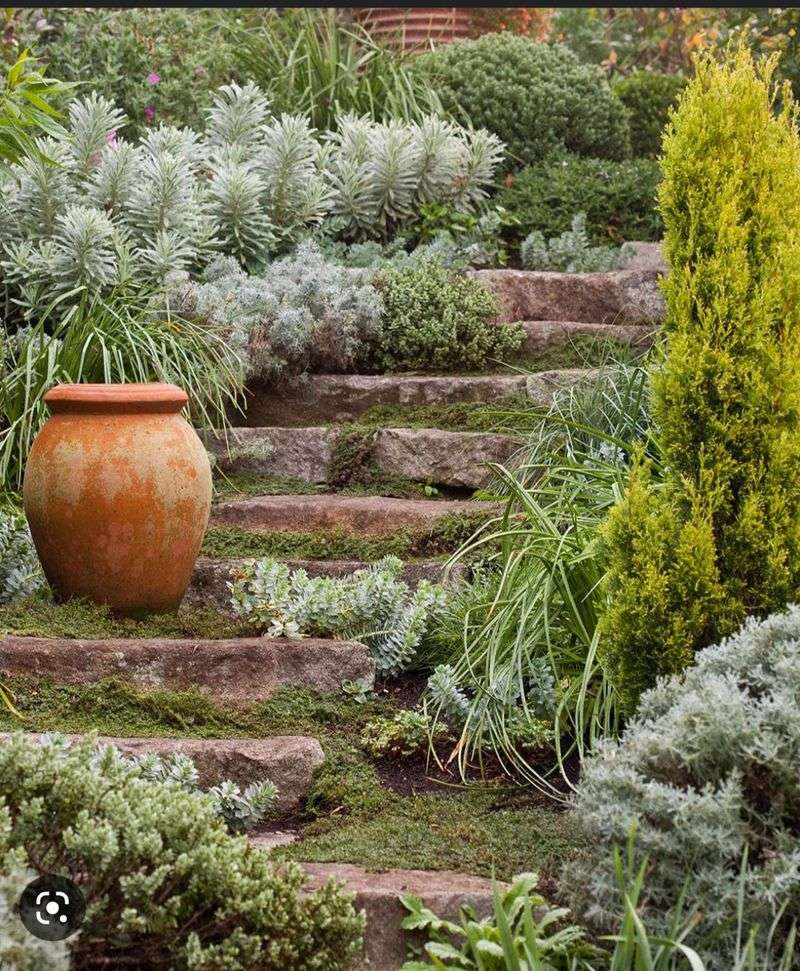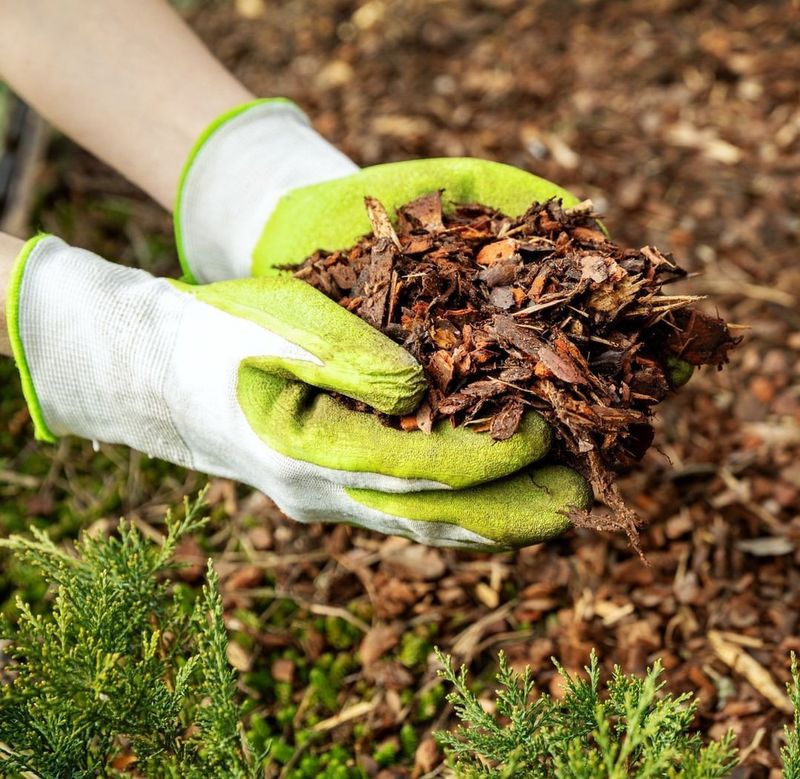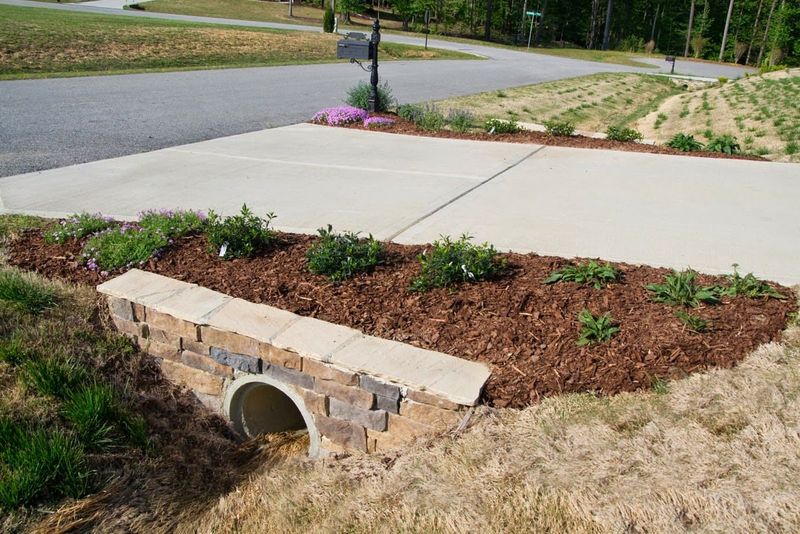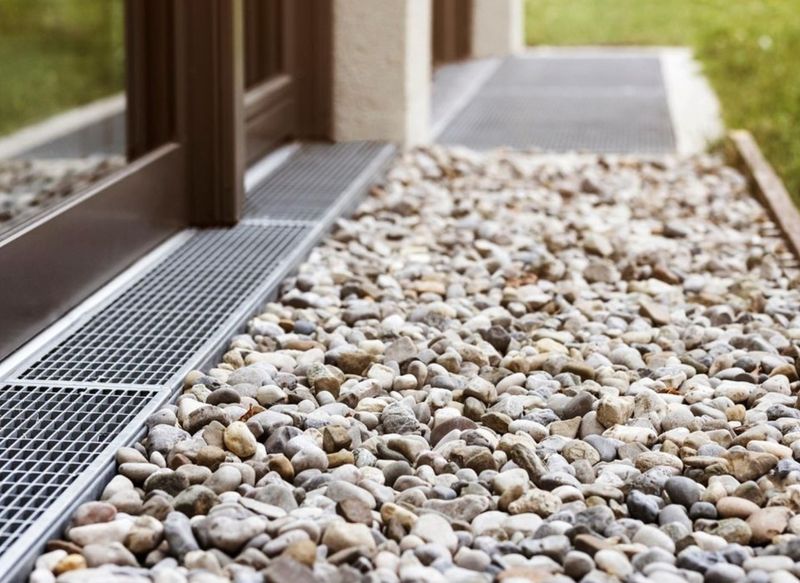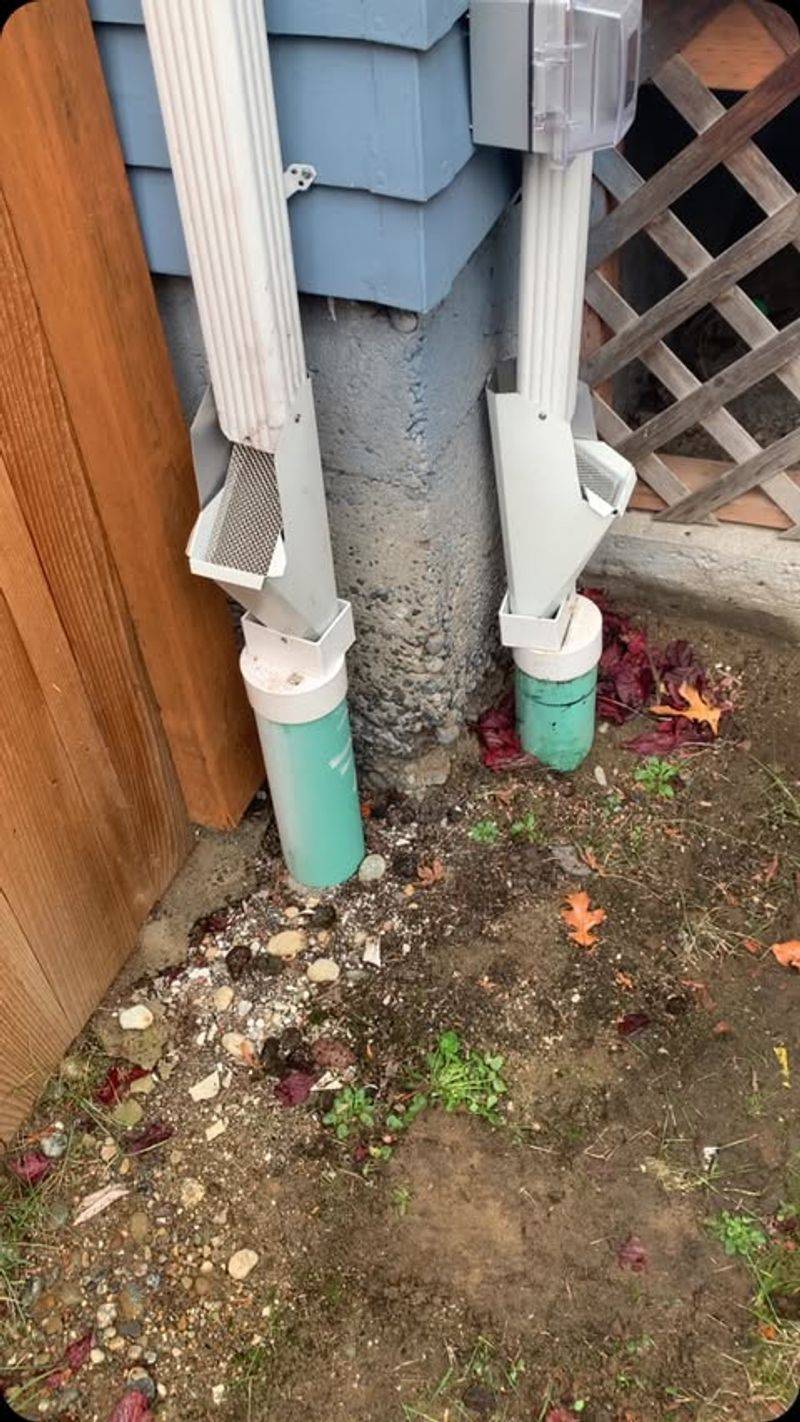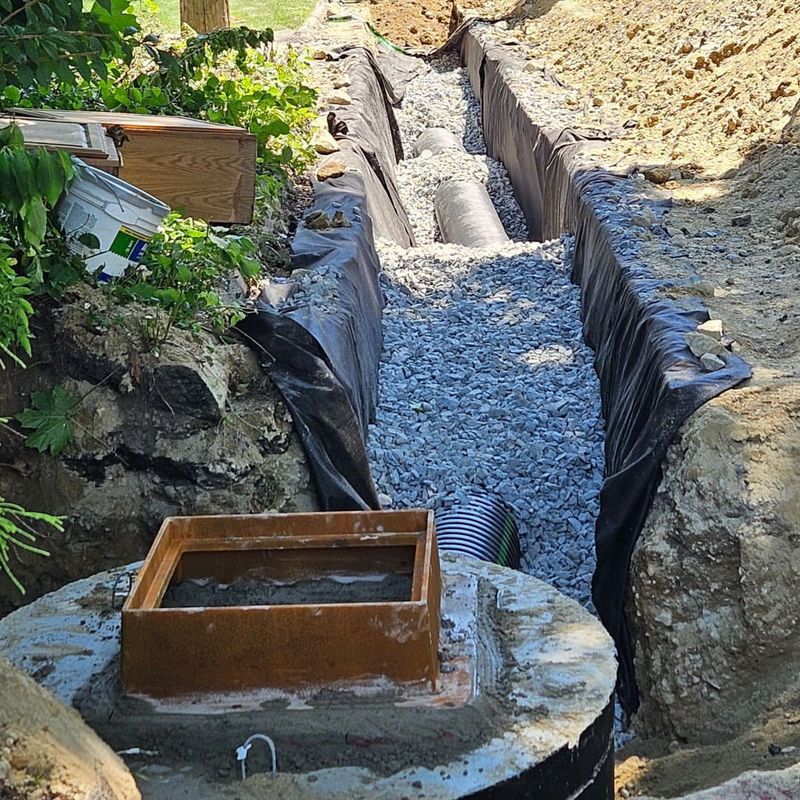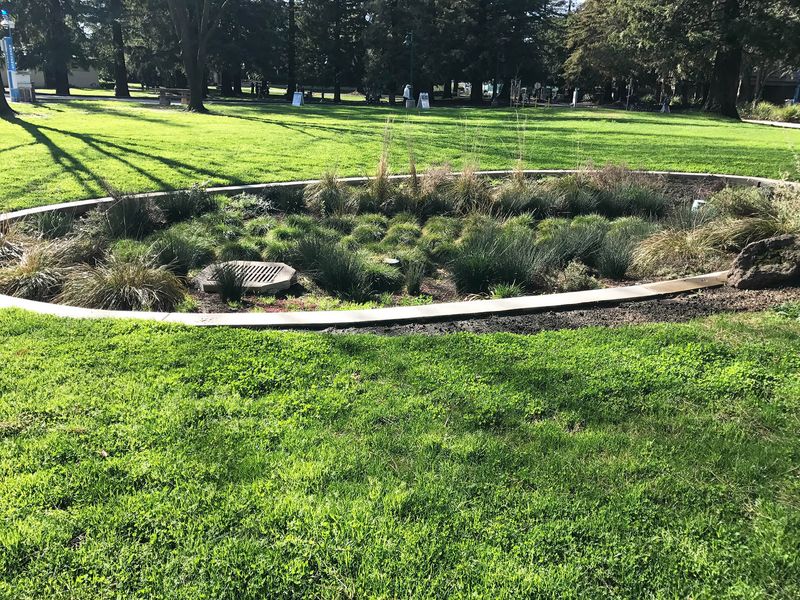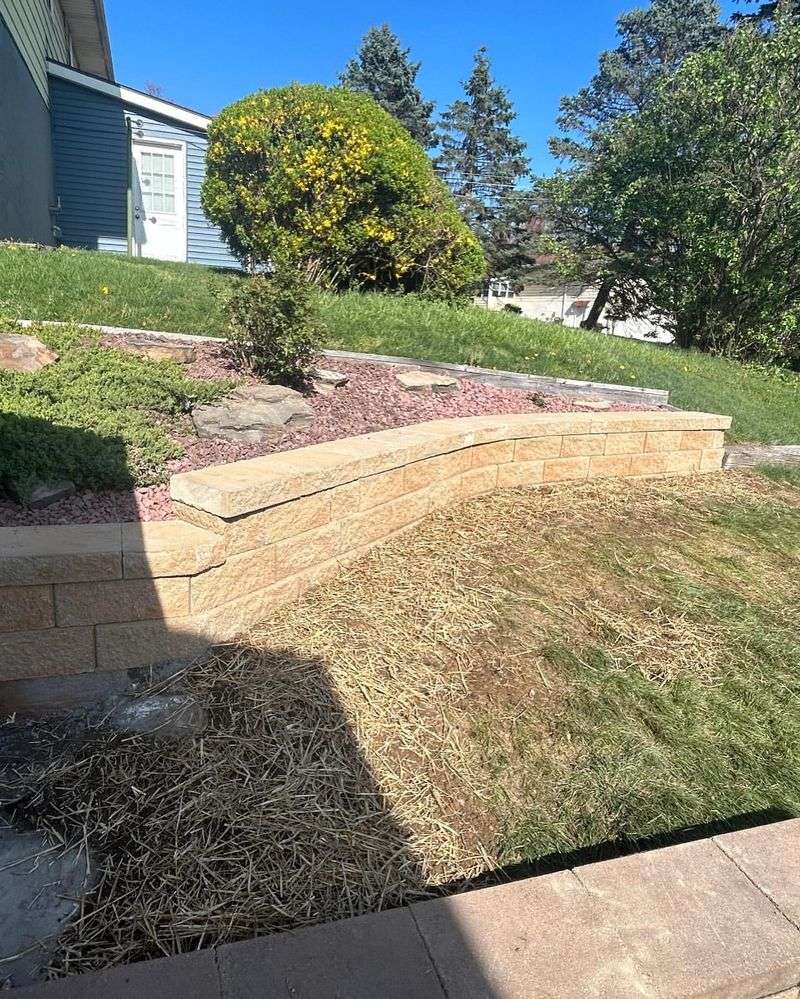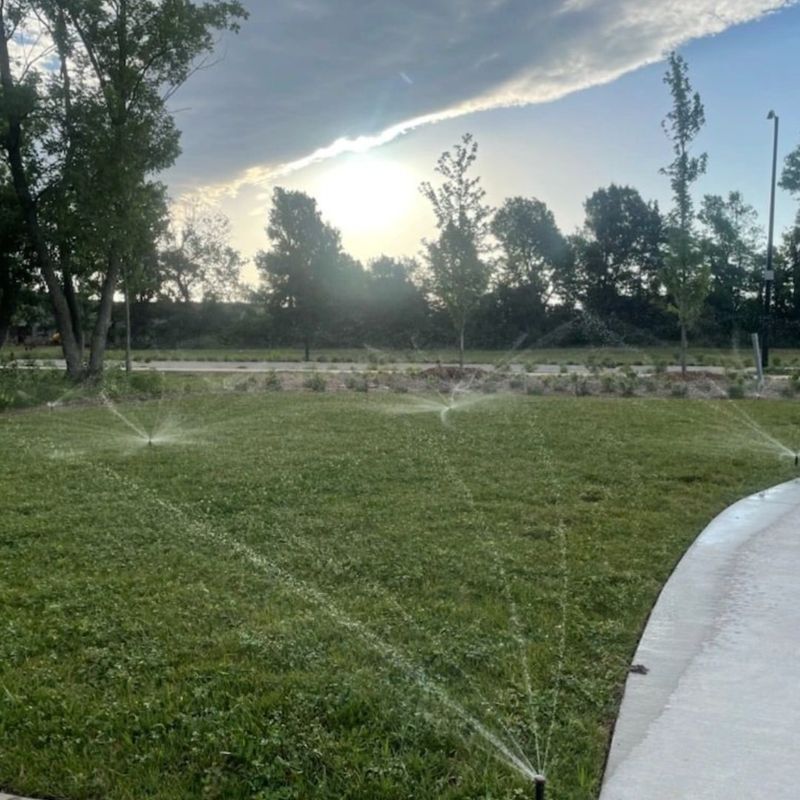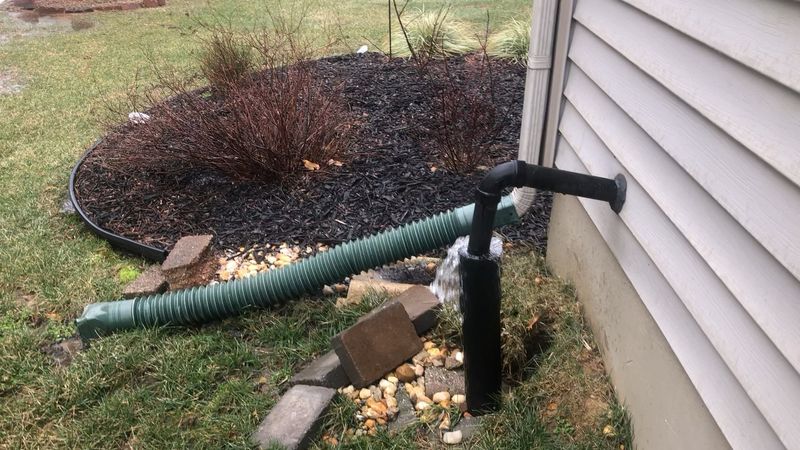Are puddles taking over your yard faster than a duck to water? Fear not! Our expertly curated list of yard drainage solutions is here to provide clarity. Whether you’re battling against a backyard swamp or seeking to prevent one, this guide will help transform your outdoor space from a quagmire to a sanctuary. Join us as we explore creative and practical methods to encourage proper water flow, keeping your lawn lush and your foundations dry without causing a splash. Get ready to bid farewell to those unwanted water features in your garden!
1. French Drains
French drains are a chic solution for those who fancy a bit of European flair in their yard. These cleverly designed systems involve digging a trench, filling it with gravel, and laying down a perforated pipe to guide water away. It’s like giving water its own special highway!
This system can be hidden under sod or decorative rocks, making it both functional and stylish. Splitting up the yard like a lopsided baguette, French drains ensure water is swept swiftly away, preventing those pesky puddles from overstaying their welcome.
2. Rain Gardens
Rain gardens are nature’s way of saying, “I got this!” By planting a garden that loves water as much as a duck, you create a natural drainage system that’s as beautiful as it is effective. These gardens are usually filled with native plants that thrive on excess rainwater, turning a soggy problem into a floral paradise.
Not only do they manage water runoff efficiently, but they also provide a habitat for local wildlife. So, while your garden is hard at work absorbing rain, you can sit back and enjoy nature’s show.
3. Dry Wells
Dry wells are like the secret agents of yard drainage, quietly working underground to whisk water away. Positioned strategically, they collect and disperse runoff water, preventing your yard from resembling a marsh.
These handy wells are buried beneath the surface, filled with gravel and stones to allow water to percolate through the soil. Their covert operations ensure that water is effectively managed, all while keeping your yard’s aesthetics intact. It’s a discreet yet powerful way to combat excess water, leaving your lawn looking as dapper as ever.
4. Grassy Swales
Grassy swales are the gentle giants of yard drainage, offering a natural and eco-friendly way to channel water. These shallow, vegetated channels slow down the water flow, allowing it to soak into the ground gradually. They’re not only efficient but also add an aesthetically pleasing element to your landscape.
Imagine a mini-river serenely weaving through your yard, adorned with wildflowers and lush grass. With grassy swales, your yard gets a natural facelift while efficiently managing runoff, ensuring your lawn remains the envy of the neighborhood.
5. Permeable Paving
Permeable paving is the hero your driveway never knew it needed. By using materials like paving stones or porous asphalt, water is allowed to seep through rather than pool on the surface. This innovative solution not only reduces runoff but also recharges the groundwater supply.
Imagine your driveway as a giant sponge, soaking up rainwater and preventing those unsightly puddles. It’s a win-win situation, with your driveway looking stylish and your yard staying dry. With permeable paving, you can put a stopper on runoff while keeping things chic.
6. Soil Aeration
Soil aeration is like giving your lawn a much-needed spa day. By poking small holes into the soil, you improve its ability to absorb water, reducing runoff and enhancing drainage. This process allows water, air, and nutrients to penetrate deeper into the roots, promoting healthy grass growth.
It’s a simple yet effective way to encourage drainage and keep your yard in top shape. Think of it as acupuncture for your lawn, relieving the tension of compacted soil and letting it breathe freely. Your grass will thank you with a lush, green smile.
7. Gutter Extensions
Gutter extensions are the unsung heroes of home drainage systems. By directing rainwater away from your home’s foundation, they prevent water from pooling and causing damage. These extensions can be easily attached to existing gutters, guiding water to a more suitable location, like a garden or a rain barrel. It’s like giving your house a pair of arms to fend off unwanted water.
With gutter extensions, you can ensure that rainwater is channeled away efficiently, keeping your foundation dry and your garden happy. It’s a simple yet effective solution for yard drainage woes.
8. Rain Barrels
Rain barrels are like nature’s piggy banks, saving up rainwater for a non-rainy day. These barrels collect water from your roof, storing it for future use in your garden. Not only do they help manage runoff, but they also provide a sustainable water source for your plants.
It’s an eco-friendly solution that adds charm to any garden. Plus, you’ll have a backup water supply when the weather gets dry. With rain barrels, your yard drainage gets a boost, and you can water your plants guilt-free, knowing you’re doing your part for the environment.
9. Trench Drains
Trench drains are like the water bouncers of your property, standing guard to ensure proper drainage. Installed along driveways, patios, or pool decks, these linear drains catch and redirect water away from problem areas. With a simple trench and grate system, they efficiently manage runoff, keeping surfaces dry and safe.
Think of them as the moat protecting your castle from a watery invasion. By guiding excess water away, trench drains maintain the integrity of your hardscapes and prevent unwanted pooling. It’s a straightforward solution to keep your property high and dry.
10. Bioswales
Bioswales are the eco-warriors of the drainage world, blending beauty with functionality. These landscaped depressions are designed to capture and filter runoff, using native plants to absorb excess water. As water travels through the bioswale, pollutants are filtered out, making it a green solution for yard drainage.
Picture a lush, mini-ecosystem working tirelessly to keep your yard dry and clean. It’s an environmentally friendly choice that supports local biodiversity while managing stormwater. With bioswales, your yard becomes a sanctuary for both plants and water management, combining utility with natural beauty.
11. Terracing
Terracing is like the art of landscaping on a grand scale, transforming sloped areas into manageable, flat sections. By creating terraces, you slow down water flow, reducing erosion and encouraging absorption. This method not only improves drainage but also adds visual interest to your yard.
Imagine a series of steps, each adorned with vibrant plants, cascading down a hillside. It’s a practical and beautiful way to tackle drainage issues while enhancing your landscape. With terracing, you can turn a challenging slope into a stunning feature, making the most of your outdoor space.
12. Mulching
Mulching is the gardener’s secret weapon against poor drainage. By applying a layer of organic material like wood chips or straw, you help retain soil moisture and improve its structure. This not only enhances water absorption but also reduces runoff.
Mulch acts as a protective blanket, shielding the soil from erosion and temperature fluctuations. It’s a simple and cost-effective way to boost your garden’s health and drainage capabilities. Picture your plants snuggled under a cozy layer, enjoying the benefits of improved water retention.
Mulching provides a win-win situation for both drainage and plant vitality.
13. Culverts
Culverts are the tunnels of the drainage world, providing a passageway for water under roads or driveways. These structures ensure that water flows smoothly from one side to the other, preventing flooding and erosion. Culverts come in various shapes and sizes, from pipes to box-like constructions, adapting to the landscape’s needs.
They’re the unsung heroes, working diligently to maintain proper drainage while you go about your day. With culverts, you can rest easy knowing that water has its own dedicated path, keeping your property safe from the perils of excess runoff.
14. Channel Drains
Channel drains are like the superhighways for rainwater, efficiently guiding it away from walkways and patios. These long, narrow drains feature a grated cover and are installed flush with the surface, allowing water to flow seamlessly into the drainage system. They’re perfect for areas prone to water buildup, ensuring that surfaces remain dry and slip-free.
By installing channel drains, you’re essentially providing water with an express route out of your yard, preventing puddles and potential damage. It’s a sleek and effective solution that complements modern landscaping without sacrificing functionality.
15. Downspout Diverters
Downspout diverters are the clever contraptions that help you take control of rainwater from your roof. By attaching them to your gutter system, you can redirect water to a rain barrel or a designated area in your garden. It’s like giving your downspout a mind of its own, deciding where the water should go.
This not only aids in proper drainage but also conserves water for later use. With downspout diverters, you can manage runoff with ease, turning a potential problem into a resourceful opportunity. They’re a smart addition to any eco-conscious home.
16. Infiltration Trenches
Infiltration trenches are the unsung heroes of sustainable drainage solutions. These shallow, gravel-filled ditches are designed to capture and allow water to seep into the ground slowly. By promoting natural infiltration, they reduce runoff and replenish groundwater supplies.
It’s like giving rainwater a VIP pass to the soil, bypassing the usual puddling and erosion suspects. Infiltration trenches are ideal for areas with periodic heavy rains, ensuring that your yard remains well-drained and lush. With this method, you’re not just managing water; you’re nurturing the earth beneath your feet.
17. Vegetated Filter Strips
Vegetated filter strips are the unsung guardians of your landscape, working tirelessly to filter and absorb runoff. These strips of dense vegetation are positioned strategically to intercept water flow, allowing it to soak into the ground naturally.
By doing so, they help reduce erosion and improve water quality, all while adding a touch of green beauty to your yard. It’s as if your garden has its own superhero team, defending against the forces of nature. With vegetated filter strips, you can enhance your landscape’s aesthetics and functionality, making every rainstorm a little less daunting.
18. Regrading
Regrading is the art of reshaping your landscape to improve drainage and prevent water-related woes. By adjusting the slope and elevation of your yard, you can direct water away from problem areas, reducing the risk of flooding.
It’s a bit like giving your yard a facelift, with the added benefit of enhanced drainage. Regrading can be as simple as leveling out low spots or as complex as creating entirely new contours. With this method, you can transform your outdoor space, ensuring that water flows smoothly where you want it, leaving your yard pristine and puddle-free.
19. Smart Irrigation Systems
Smart irrigation systems are the tech-savvy way to ensure your yard stays hydrated without overwatering. These systems use sensors and weather data to adjust watering schedules, preventing unnecessary runoff and conserving water. It’s like having a personal assistant for your garden, optimizing water usage with precision.
By employing smart irrigation, you can maintain healthy plants while minimizing drainage issues, all from the convenience of your smartphone. This innovative approach allows you to take control of your garden’s hydration needs, ensuring a lush landscape without the water waste.
20. Sump Pumps
Sump pumps are the ultimate defenders against basement flooding, ensuring your lower levels remain dry and usable. These pumps are installed in sump pits, collecting water that accumulates and directing it away from your home.
It’s like having an emergency escape plan for water, ready to spring into action when needed. With a sump pump, you can protect your basement from the perils of excessive moisture, maintaining a safe and dry environment. This essential tool is a must-have for homes in areas prone to heavy rainfall, providing peace of mind and effective drainage.

